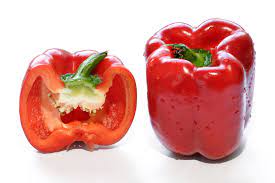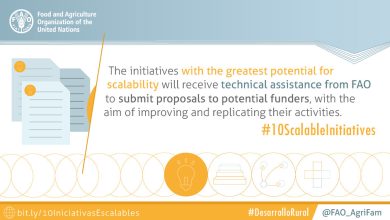Capsicum Farming in India with Relevant Information


Capsicum is also called “sweet pepper” and It is one of the prominent high-value crops cultivated in greenhouses. Capsicum is rich in vitamin A, vitamin C and minerals. Due to its easy connection with urban markets in India, capsicum farming is very renowned in peri-urban production systems. Due to the ready market availability throughout the year, its importance is also increasing in the state of Goa. It is sold for Rs 80-ISO/Kg depending on colour, quality, season, etc. The yield of Capsicum in open field cultivation ranges between 20-40 t/ha, while in the greenhouse, the yield range is from 100-120 t. / hectare.
Process of Capsicum Farming in India
Capsicum farming is very profitable for every farmer. Therefore we take further steps to understand how to start and when it will be done. Apart from this, you should also know which equipment is essential for this farming. However, you know that tractors take the first preference among the implements. So you should choose a reliable and well-known tractor brand model. You have many options, and you can choose the Eicher 380 and many more.
Climate Requirement For Capsicum
Capsicum sows the crop in cool-season, and day temperature less than 30% is optimistic for growth and yield. But you can successfully cultivate it in a warm climatic place such as goa state due to the introduction of many hybrids with wider adaptability.
But too high-temperature results in the rapid growth of plants and affected fruit set. On the other hand, lower night temperatures favour flowering and fruit sets. Hence, planting during September-October in Goa will coincide with mild climate during flowering and fruiting, i.e. during November to February. You require shade during the summer to avoid temperature build-up in the greenhouse.
Capsicum production – Selection of Planting Material
You should keep the plant material healthy and resistant to disease % & pests. Farmers should keep the age of seedlings 35 to 40 days old. You should keep the height of the seedlings 16 to 20 cm, and the plant should possess a good rooting system. At the time of plantation, the seedling must have at least 4 to 6 leaves on the stem. You should also consider other characteristics such as fruit colour, production, fruit shapes, vigour, fruit quality while selecting the plant material of a good variety of Capsicum.
Soil Sterilisation and Growing Beds
The soil inside the polyhouse is loosened a bit, and then beds are made at the height of 45 cm with 75 cm width, and a working space of 45 cm is left between the two beds. Before bed formation, well-decomposed organic manure or vermicompost mixes with sand sawdust in the soil at the rate of 10 kg. The beds are moistening with 4% formaldehyde (4 ltr of bed) and cover with polythene sheets for 3-5 days. Afterward you can remove the polyethene. The beds are raked repeatedly every day to completely remove the trapped formaldehyde fumes before planting.
Planting, Training and Pruning of Capsicum
Farmers plant the prepared seedlings on raised beds at a distance of 30 cm between the plants as a paired row system at a distance of 60 cm between the rows. Before planting, Imidacloprid (0.3mVl) is spraying on the seedlings to prevent any sucking pest infestation in the polyhouse.
You should irrigate the bed with water and keep it wet during the plantation. Farmers should sow the capsicum in two rows on the raised beds. You can also plant capsicum on a raised bed with plastic mulch to save water and check the growth of weeds. Water the bed daily from the rose can until the plant is well establish. Later on, daily drip irrigation is introduce to supply 2-3 litres of water per square metre per day, depending on the local weather conditions. Farmers train the capsicum plants to maintain 2-4 stems per plant. You should prune the plant at weekly intervals from 15-20 days after transplanting.
Pest and Disease Control of Capsicum
Mites and Thrips:-
It is a sucking pest that affects the usual greenhouse crops. Capsicum is self-pollinating, but you can see a high degree of cross-pollination on it. Due to honey bees, thrips and other insects that transfer pollen from flower to bloom. Using “electric bees” or spraying plant hormones does not improve pollination, but pollination is markedly better when bees or bumble bees fly in greenhouses. In addition, bees exceed the number of seeds in capsicum fruits.
Harvesting and Yield of Capsicum
You can harvest the Capsicum starting from 60 days of planting in case of green colour capsicum and 80 to 90 days in case of red and yellow fruit hybrid. You should continue harvesting up to 170 to 180 days at the interval of 10 days in green and 200 to 250 days in yellow and red. Fruits that are yellow and mature green when it is 75% red and yellow when it is 100% red are harvest and kept cool.
Need the Equipment in the Capsicum Cultivation
When you want to get knowledge about cultivation, you should also know the tools that will help in increasing the yield. Cultivator, rotavator, tiller and tractor are essential in every cultivation. However, the tractor contains the most prominent role of all the equipment. That’s why we recommend the Farmtrac 60 tractor for capsicum cultivation in India.
For more information regarding capsicum cultivation in India, stay tuned with us.
Apart from this if you are interested to know about How to Celebrate then visit our Lifestyle category.





